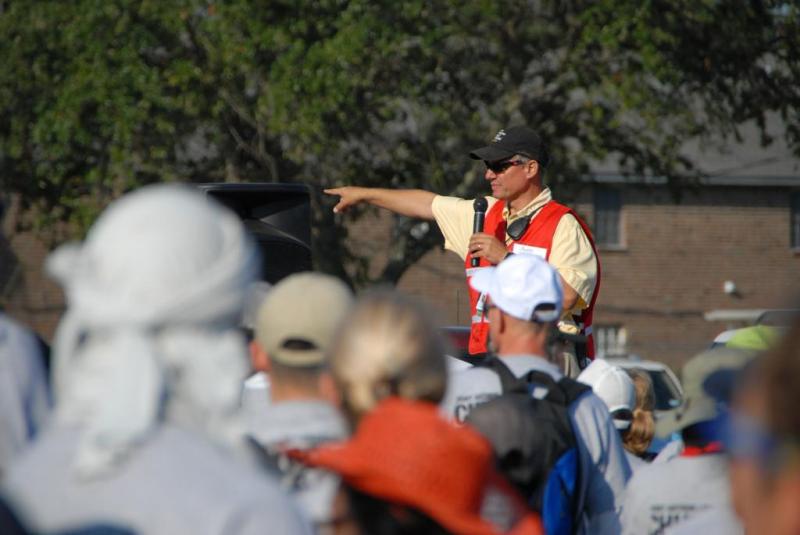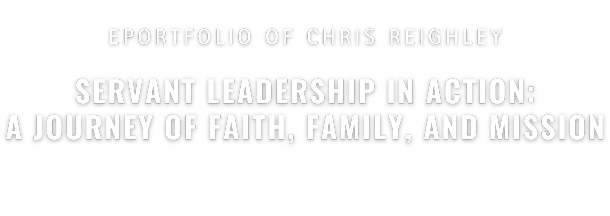Crisis management has been a defining element of my career, spanning multiple industries and roles. Whether leading teams in disaster zones, managing corporate crises or guiding nonprofit organizations through turbulent times, I’ve found that effective crisis management is rooted in the ability to remain calm, make decisive decisions, and, above all, serve others. Crises are unpredictable, but the way we respond to them can make all the difference in the outcome.
Leading Through Crisis with Clarity and Compassion

When I think about crisis management, I don’t see it as merely solving problems—I see it as guiding people through their most challenging moments. I’ve had the privilege of managing over 50 disaster deployments during my time at the Austin Disaster Relief Network (ADRN). Each deployment brought unique challenges—whether a hurricane, flood, or wildfire—but they also reinforced a core truth: effective leadership in a crisis is about serving those around you with clarity, decisiveness, and empathy.
In these high-pressure environments, decisions must be made quickly. I’ve learned the importance of staying calm under pressure, knowing that my team and the communities we serve are counting on a steady hand. For example, during Hurricane Harvey, we faced rapidly shifting circumstances. Resources were scarce, communication lines were stretched thin, and the needs of the affected communities were overwhelming. In those moments, I knew that leading with confidence and a clear plan was essential. We developed real-time strategies to ensure the timely deployment of volunteers and resources, coordinating our efforts with FEMA and other agencies. It wasn’t about having all the answers but about creating a pathway forward in the chaos.
The Power of Clear Communication
In crisis management, communication is everything. The ability to convey clear, accurate information to teams, partners, and stakeholders can mean the difference between confusion and coordination. During my work at totes-ISOTONER, I saw this firsthand. Our eCommerce platform faced several critical disruptions, particularly during peak shopping seasons. Supply chain issues caused significant delays, and customers needed immediate answers. In those moments, I led the communication strategy, ensuring that we were transparent with our customers through email and social media channels, providing updates and offering solutions. This transparency wasn’t just about managing expectations; it was about maintaining trust during difficult times. By prioritizing clear, honest communication, we were able to mitigate the impact of the disruptions and preserve customer loyalty.
Leadership in Crisis: A Focus on Empowerment
One of the most important lessons I’ve learned in crisis management is that leadership isn’t about control—it’s about empowerment. At ADRN, I managed a team of 7 direct reports and coordinated thousands of volunteers. In the midst of disaster deployments, no one person can do everything. Success depends on equipping others to lead, ensuring that each person understands their role and feels confident in their ability to carry it out. During the response to the Central Texas floods, I trained hundreds of volunteers through the Incident Command System (ICS) framework, ensuring that they were prepared to act swiftly and effectively in the field. By empowering these volunteers with the right tools and knowledge, we were able to provide timely relief to affected communities and restore a sense of normalcy in the aftermath.
Risk Assessment and Adaptability: Planning for the Unexpected
Crises, by their nature, are unpredictable. But while we can’t always anticipate when or where a crisis will strike, we can prepare. At FillTek, where I oversaw the logistics of international trade, there were countless moments when unforeseen regulatory changes or customs delays threatened to derail operations. In one instance, we faced a significant delay with a high-value shipment for one of our top clients, Tommy Hilfiger. Rather than reacting in haste, I worked closely with my team to develop a contingency plan that ensured the order was processed through alternative channels, all while maintaining clear communication with the client. The ability to adapt and pivot quickly allowed us to avoid potential fallout, and the client appreciated the transparency and proactive approach we took.
Resource Management: Maximizing Impact with Limited Resources
During my deployments with ADRN, resources—whether personnel, supplies, or time—were often in short supply. It was my responsibility to ensure that every available resource was used to its maximum potential. In managing logistics for large-scale shelter operations and medical supplies, I had to make critical decisions about where to allocate people and materials to have the greatest impact. For example, during the aftermath of Hurricane Harvey, the volume of people needing shelter far exceeded the available facilities. My team and I worked around the clock to coordinate with local agencies, find alternative shelter solutions, and ensure that basic needs such as food, water, and medical care were met. It wasn’t just about managing resources—it was about ensuring that people were cared for in their greatest time of need.
Empathy and Emotional Intelligence in Crisis Management
I’ve always believed that crisis management is as much about caring for people as it is about managing operations. In my leadership role at ADRN, we weren’t just dealing with logistics; we were dealing with people—people who had lost everything. I worked closely with my team to ensure that emotional care was integrated into every aspect of our response. This included training volunteers in Psychological First Aid, empowering them to not only meet the physical needs of survivors but also to provide comfort and reassurance in moments of deep distress. I’ve found that leading with empathy—listening, understanding, and offering support—creates a culture of care that resonates far beyond the crisis itself.
Learning and Improving from Every Crisis
Each crisis presents an opportunity to learn and improve. After every disaster deployment, I conducted thorough debriefs with my team, identifying what worked well and where we could improve. This constant focus on learning and growth has shaped my approach to crisis management over the years. At ADRN, these post-crisis evaluations have allowed us to refine our response strategies, ensuring that we’re even better prepared for the next challenge. I believe that great crisis management isn’t just about responding to the crisis at hand—it’s about building a foundation for stronger, more resilient teams and systems in the future.
Navigating Corporate Crises with Strategic Foresight
In addition to disaster relief, my work in the corporate sector has reinforced the importance of strategic foresight in crisis management. At totes-ISOTONER, we faced multiple challenges related to supply chain disruptions and platform outages. These crises tested our ability to act quickly and efficiently. But through each challenge, we developed better systems for managing risk, communicating with customers, and ensuring business continuity. The ability to see beyond the immediate crisis and plan for long-term recovery is a skill I’ve refined over time, and it’s one I bring to every crisis I manage.
The Bigger Picture: Crisis Management with Purpose
Ultimately, crisis management is about more than just fixing problems—it’s about guiding people and organizations through their most challenging moments, providing stability, hope, and a path forward. I’ve been fortunate to lead teams in both nonprofit and corporate settings, navigating crises that tested every aspect of our operations. But through each crisis, I’ve learned that what matters most is how we serve the people around us, how we communicate, and how we prepare for the future.
Let’s Connect
If your organization is facing challenges and you’re looking for a leader who can guide your team through uncertainty with calm, clarity, and compassion, I’d love to connect. Let’s discuss how I can help you navigate crises and build a more resilient future.

